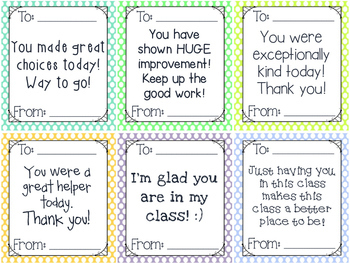Business Communication Notes For Students
 Oct 26, 2018 - Follow these steps to download Pro or Standard versions of Adobe Acrobat XI or Acrobat X.
Oct 26, 2018 - Follow these steps to download Pro or Standard versions of Adobe Acrobat XI or Acrobat X.

1. Business Communication Today by Courtland L. Bovee, John V. Thill, Barbara E. Schatzman, Hardcover: 730 pages, Publisher: Prentice Hall
This is a 'must have' for anyone whose job requires writing clear, professional reports, memos, e-mail, or letters. Helps readers refine their existing communications skills while learning how to communicate effectively via various mediums, including the Internet and other technologies. Listening, working in teams, understanding nonverbal communication are also covered and a handy appendix includes grammar & usage fundamentals. For readers in all levels of business interested in improving their communications skills and corporate business communication trainers.
2. Excellence In Business Communication (6th Edition) by John Thill, Courtland L. Bovee, Paperback: 656 pages, Publisher: Prentice Hall
This best-selling book captures the dynamics of business communication as no other on the market does. It presents the subject in a fascinating way, powerfully stimulating and motivating readers; this book gives the foundation for excellent, effective, and practical business communication. By offering “On the Job” simulations that feature actual companies, readers apply business communication concepts to real situations and sharpen their problem-solving skills. Incorporating a three-step approach to writing (planning, writing, and completing business messages), Excellence in Business Communication covers letters, memos, e-mail and other brief messages, reports and oral presentations, and employment messages (including resumes and application letters). With its helpful appendices and a “Handbook of Grammar, Mechanics, and Usage,” this a must-have desk reference for anyone responsible for writing business letters, e-mail, memos, and reports.
Other publications include the FBLA Chapter Management Handbook (CMH), Tomorrow’s Business Leader magazine, conference guides, competitive events guides, and other educational materials. Prepare students for conferences and competitive events, and ways to be more effective advisers. And communication via the Internet may have far. Business Communications Chapter 3 notes 1. Chapter 3 Improving Writing Techniques 2. Formal Research Methods for Gathering Information Search manually (books, magazines, journals). Access electronically (Internet, databases, compact discs). Go to the source (interviews, surveys, questionnaires, focus groups).
3. Essentials of Business Communication with Student CD-ROM by Mary Ellen Guffey, Paperback: 511 pages, Publisher: South-Western Educational
This textbook-workbook is a streamlined, no-nonsense approach to business communication. It takes a three-in-one approach: (1) text, (2) practical workbook, and (3) self-teaching grammar/mechanics handbook. The chapters reinforce basic writing skills, then apply these skills to a variety of memos, letters, reports, and resumes. This new edition features increased coverage of contemporary business communication issues including oral communication, electronic forms of communication, diversity and ethics.
4. Business Communication: Building Critical Skills by Kitty O. Locker, Stephen Kyo Kaczmarek, Hardcover: 637 pages, Publisher: Irwin/McGraw-Hill
A unique approach to a hands-on course, This textbook is not a cut and paste of Kitty Locker's popular Business Administrative Communication text, but is a completely new approach devised and created with the assistance of a community college colleague. The innovative module structure allows instructors to focus on specific skills and provides greater flexibility for short courses and different teaching approaches. While grounded in solid business communication fundamentals, this paperback takes a strong workplace activity orientation which helps students connect what they learn to what they do or will do on the job.
5. Business Communication for Managers : An Advanced Approach by John M. Penrose, Robert W. Rasberry, Robert J. Myers, Hardcover: 480 pages, Publisher: South-Western College
This textbook presents balanced treatment of both the theory and applications of managerial communication. Content includes strong coverage of ethics, cross-cultural communication and the newest technological influences in communication. Unique, practical chapters on visual support of written and oral presentations are provided in addition to coverage on how to write and deliver a case analysis, meeting management, and report writing. Strong integrated coverage of technology continues throughout this edition. While communication concepts remain largely the same -- the technology that is used to communicate has changed and these changes are reflected in the fifth edition. Coverage of listening skills, intercultural communication, e-plagiarism, developing PowerPoint presentations, and writing instructions has been extensively enhanced.
6. Guide to Managerial Communication (6th Edition) by Mary Munter, Paperback: 198 pages, Publisher: Prentice Hall
Discusses how to communicate verbally and in print in the business world. Provides instruction on establishing a strategy on how to present what you want to say and techniques on how to speak or write more efficiently and effectively to communicate what you want to say.
7. Communicating for Managerial Effectiveness by Phillip G. Clampitt, Paperback: 304 pages, Publisher: SAGE Publications
Enables managers and students to clearly view their communication abilities and organizational dilemmas and challenges. The first two chapters explain the complex process of communication. The third chapter examines the impact of corporate culture on the communication climate. The next six chapters analyze critical communication challenges most managers face. The final chapter focuses on ethics and building trust through communication practices. Real world cases and examples used throughout the book are drawn from Clampitt’s extensive organizational consulting experience and from the worlds of politics, history, science, and art.
